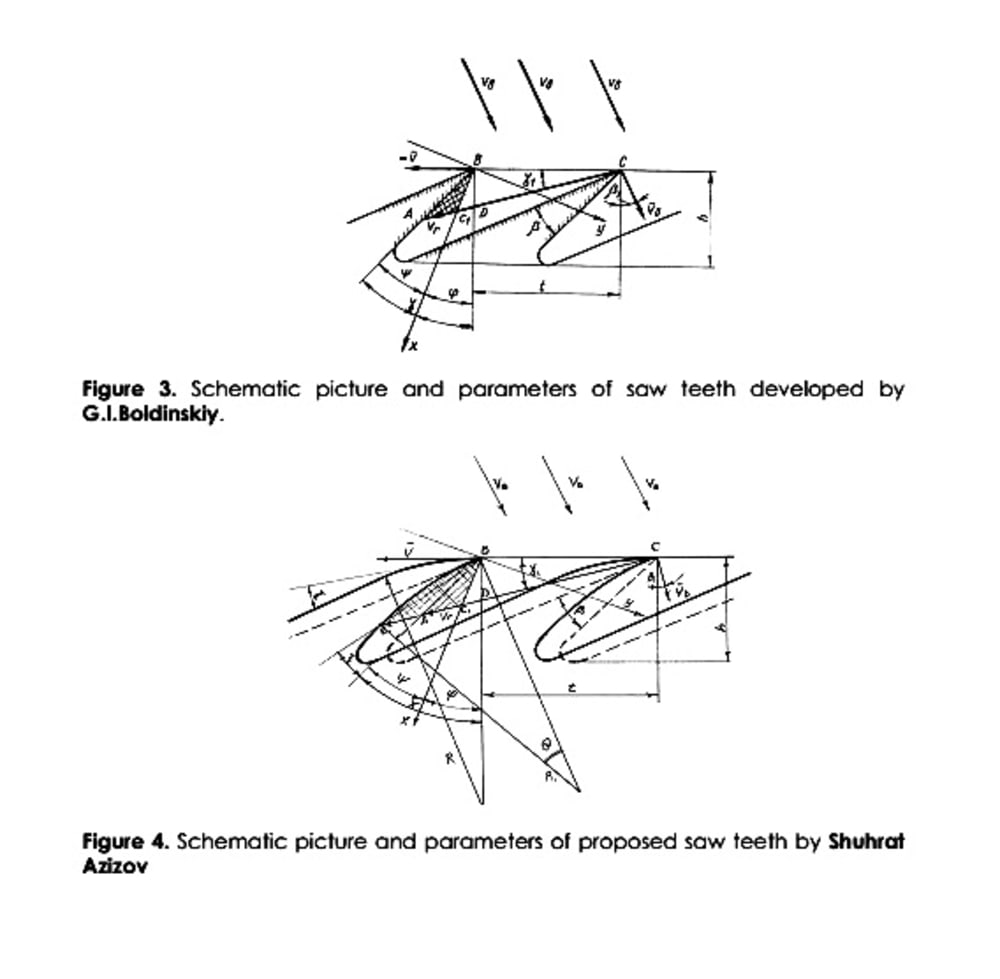Problem 1: Knowledge innovation will be developed and experimented in the areas of light industry. Those areas are currently facing crucial development choices in re-defining their character. Particularly, in the area of cotton processing, different types of cotton ginning machines have not been analyzed concentrating on the quantity of long fibers in the outcome and therefore the cause have not been studied.
Problem 2: Theoretical and experimental researches executed in the Central Asia and Europe explored some ways of substantiating the rational profile of a tooth of gin-saw and its fibre capturing ability. Despite that, until now, optimum parameters of a saw gin which provides high quality ginning without harming the quality of cotton fibre have not been found.
Problem 3: Current ginning machines treat all cotton sorts equally, i.e. cotton is ginned in the same technologic regime way irrespective of its sort and characteristics such as: dampness, fiber density, and the size and weight of cotton seed. As the result the outcome will be different depending on the characteristics and the sort of cotton.
Analysis of the strength of the saws to the dynamic and static loads; the results of the investigations shows that the Saw wearout occurs due to the bending of the shaft under dynamic loads. During the gin working is low density and high density of raw cotton fibers assessment of damage; the results of the investigations shows that the high density of raw higher damage to fibers during ginning. Assessment of the relationship quality fibers at different distances between the saws ginning; the results of the investigations shows that the Since reduction of the distance between saw with 22 mm before 16 mm brings about fascination mechanically damaged filaments from 19.2 to 45%, interrupted filaments from 9,3 to 18% and thin skins with filament and fuzz from 1.66 to 2.38%.
To solve this problem, we made an energy efficiency ginning machine. In old machines their saw cylinder included 130 saws, but there were much more problems described above. Because the distance between saws is 14,59 mm . As a result short cotton fibre increased in amount and it takes more time to gin. In conclusion, our new model of ginning machine enables energy efficient production, unlike old models of ginning machine, there are two saw cylinders in the new design of gin with like parameters which are located in one worker chamber. When worker chambers consume cotton, it appears loosening and in lengthened oval form. This allows reducing the density and accelerating the process of ginning and getting a qualitative fiber.
Moreover, as a result of a lot of investigations we made new profile teeth of ginning machine which results increasing the quantity of captured cotton fiber from saws 1.7- 2.5 times more.
Finally the new dual-cylinder gin production half as much again as single-cylinder one and its toughness characteristic 1,7 times more. The results of the investigations show increasing the quantity of captured cotton fiber from saws 1.5- 2 times more.
Like this entry?
-
About the Entrant
- Name:Shuhrat Azizov
- Type of entry:individual
- Software used for this entry:CAD, CAM, CAE
- Patent status:pending








